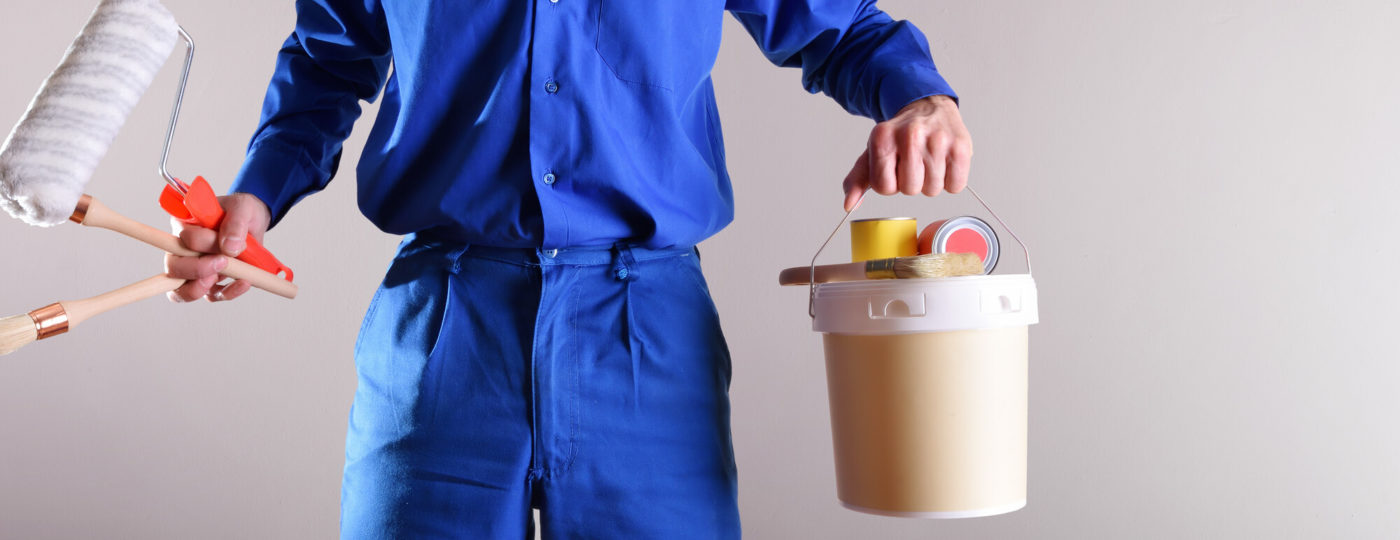While worrying about lead-based paint may sound like a thing of the past, many Americans are still at risk of finding lead in their homes. Lead-based paint was used in home construction worldwide before 1978, until housing experts discovered that lead caused serious health problems, particularly in children. The Environmental Protection Agency (EPA) banned its sale and manufacture in 1978, but many older homes were already contaminated. The Department of Housing and Urban Development (HUD) estimates that 37.1 million homes in the US (34.9%) have lead-based paint somewhere in the building.
How to Find Lead Paint In Your Home
Unfortunately, it can be challenging to differentiate lead paint at a glance. There are a few tricks and testing methods you can use to find out if your paint poses a threat. Look for spots on the wall where the paint is “alligatoring” or appearing in a scale-like pattern. This characteristic is unique to lead paint and can help identify problem areas. Frequently, lead paint has been painted over, which hides the problem but does not minimize the dangers. Make sure to thoroughly check closets, basements, attics, baseboards, and around windows – anywhere painters may have missed.
DIY or Hire a Pro?
Everyone loves to save money, especially on costly home improvement projects. However, disturbing lead-based paint can kick up toxic dust, which can cause lead poisoning when inhaled. Dealing with lead in the home is high stakes, so your best bet is to leave it to the professionals. Hiring a certified contractor for renovations is not only recommended but required by law. In 2008, the EPA passed the Lead-Based Paint Renovation, Repair, and Painting (RRP) Rule, requiring those performing renovations in homes with lead paint hazards to be EPA certified and trained on lead-safe practices. It’s vital that you never cut corners on a contractor because using an uncertified contractor is dangerous and comes with heavy fines.
Please Note: following the EPA’s lead laws and regulations is crucial to the health of occupants, and safe and successful removal can increase your home’s resale value. You can find these guidelines here.

Lead Abatement Methods
Various abatement methods are available to manage lead in the home, ranging from mitigation to total removal. Always hire a certified professional to test for lead, and ask them which abatement method is suitable for your home. The cost of lead abatement is mainly dependent on the method used. Mitigation methods like encapsulation and enclosure can be effective, especially on a tighter budget. Expect to pay $4-$10/square foot. Removal and replacement methods offer a more permanent solution but are invasive and more expensive. Many variables can affect the price tag of up to $20,000, and only an EPA-certified professional can give you an accurate estimate for your project. Let’s explore the different methods of lead abatement available to homeowners.
Encapsulation
Lead paint encapsulation works by encasing the paint with sealant to prevent additional flaking and dust. This sealant is not the same as regular paint and is designed to stop the spread of lead paint particles. Encapsulation is relatively inexpensive, with sealant ranging from $50 for a gallon to $260 for 5 gallons. Expect to pay $4-$8/square foot. While encapsulation is a more affordable option, it is not a permanent solution, as the sealant can peel or chip, especially with the added friction from windows and doors. Encapsulation is not recommended for high-touch areas, such as doorways and staircases.
Enclosure
Enclosing lead-painted surfaces involve covering the affected areas with new drywall, panels, or other materials. Fully enclosing the affected areas prevents the further spread of lead particles. Cost can vary, depending on the materials and size of the area, but you can expect to pay $9-$10/square foot. Enclosure requires less maintenance than encapsulation but is still not a permanent solution, as the lead paint remains underneath.
Removal
Total removal of lead paint can range from $10-$17/square foot. Many variables influence the cost, such as:
- Materials
- Size of area
- Area accessibility
- Labor
- Types of surface
- Proper disposal
- Prep of work area
- Evacuating affected area
- Cleanup
Removal of lead paint involves using chemicals, a heat gun, or a sander/scraper to strip the paint from the surface. A High-Efficiency Particulate Air (HEPA) vacuum is used to dispose of dust and debris properly. The area must be adequately sealed to prevent harmful particles from entering the outdoors and the home’s HVAC system. Although removal can be invasive and expensive, it offers a safe, permanent solution and will likely increase the value of your home.
Replacement
Another excellent, permanent solution is replacing the entire affected area. Replacing walls, doors, windows, ceilings, and floors can be anywhere from $1,000-$17,000. The cost is determined mainly by the size and accessibility of the area. Although a practical solution, replacing entire regions of the home runs the risk of unexpected expenses, including:
- Discovery of asbestos
- Unseen water damage
- Radon
- Termites
- Additional carpentry – especially in older homes
Replacement projects can take longer than other methods due to the demolition, cleanup, and reconstruction of the affected area. Many homeowners view this as an opportunity to invest in their property since total removal and replacement may add value.
Protect Your Home and Family Today
The discovery of lead on the property can seem daunting, and many homeowners seek financial assistance to investigate and fix the problem. There are tax breaks, grants, and low-interest loans available to encourage homeowners to take action. Lead abatement projects are a serious undertaking, which is why having an expert on your side is vital for proper removal and renovations if you find lead paint in your home. Homeowners can ensure the safety and longevity of their homes for years to come by taking the proper precautions.


